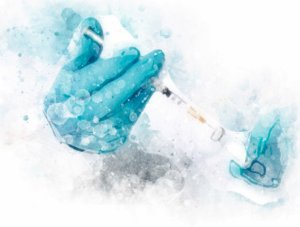
今天是2020年3月11日星期三 第二十六篇
晴天但預報明天有雨。
小區裏的梅花已經開始凋謝。一群羽毛剛剛豐滿的雛鳥在萌發新芽的樹間翻飛。
新增確診病例下降至14個。昨天市政府為慶祝部分新艙醫院停業而舉辦了數百人參加的儀式,據說一些基礎單位也召開了有百數人參加的會議。這是不是表明恐慌已經散去,解除封閉的日子已經不遠了。
通過網上辦理返城手續的返漢人員逐漸增多。傳聞市內公交也將開通,但有人說這是謠言。有的人認為政府將會分期解除對居民小區的封閉,但也有人認為分期解除不公平,要麼都解除要麼都不解除,否則沒有解除封閉的小區一定會鬧事,政府也擺不平。我們這裏經常會有一些人就政府的事務發生爭論,因為爭論雙方都站在政府和領導者角度之上,所以無論爭論多麼激烈也都只能算是人民內部矛盾。
出院回家後的患者也需要再做核酸檢測,都在社區人員護送及監督下完成。做檢測的居民在醫院等待檢測的過程中,會有五六個穿隔離服的人將其團團圍住,可能是怕居民跑路。人與人間的相互尊重在我們這裏還是很奢侈的事。這對我們來說並不難理解,因為我們從來都是這個樣子。
一個物業的人來問,能不能買到香蕉,有對老年居民特別想吃,而且他們家裏也沒有蔬菜。今天社區又給各小區分發了愛心蔬菜,不知為什麼這對老人沒有得到。
從網絡得知,新加坡對新冠肺炎的控制做的非常成功,人們沒有恐慌,連戴口罩的人都很少,但他們控制住了疫情。新加坡人多數都是華人,同樣的疫情,但結果完全不同。
拋開政治及制度等方面的因素,單從技術層面來看,我覺得新加坡的成功源自政府采取了疏導的方式,使政府與公民在相互信賴的基礎上真正做到了科學防禦,有效地控制了疫情。而我們以堵的方式,先是屏蔽信息,打壓輿情,然後在疫情失控的情況下又不得不采取了封閉隔離的措施,最終發生了類似於擠兌和踩踏的效應。政府失信於民,民眾在日趨嚴重的恐慌中,無論是否真正患有新冠肺炎都一起湧向醫院爭奪床位,致使大量真正新冠肺炎患者得不到醫治並在家庭及社會上感染他人,最終陷於惡性循環的狀態之中。
當然更值得我們思索的是,為什麼同為華人,卻會選擇兩種截然不同的應對疫情的策略和方式。這更為重要,也頗為敏感。唯有正視才能避免重蹈覆轍,我覺得這是我們的責任。
WEDNESDAY, MAR. 11, 2020
Clear skies today but rain is forecasted for tomorrow.
The plum blossoms in the neighborhood have begun to fade. A
flock of newly feathered chicks flitted among the budding trees.
The number of confirmed cases has dropped to 14. Yesterday the
city held a ceremony for hundreds of people to celebrate the closure of
some of the temporary hospitals. Some local units also held meetings with
more than 100 people. Is this a sign that the panic has dissipated and that
the day of lifting the closure is not far away?
The number of people going back to Wuhan through online
applications is gradually increasing. There are rumors that city buses will
be on service again. Some people think that the government will lift the
closure of the residential areas in steps. Still, others feel that it is unfair,
either all or none; otherwise, the areas that are not open will definitely
cause trouble, and the government will not solve it. We often have
arguments about government affairs here because both sides of the
debate are on the government's side and the leaders, so no matter how
heated the debate is, it is only an internal conflict among the people.
Patients who were discharged from the hospital and returned home
also needed to have their nucleic acid tested again which was done under
the escort and supervision of community center members. Five or six
people in isolation suits surrounded the residents while they waited for
the test, probably because they were afraid, they would run away. Mutual
respect between people is still a luxury in our area. That is not difficult
for us to understand because we have always been like this.
A person from the property came to ask if they could buy bananas.
A couple of elderly residents especially wanted to eat them, and they
didn't have any vegetables at home. So today, the community distributed
vegetables to all the districts, but the elderly couple did not get them for
some reason.
I learned from the Internet that Singapore had done a very
successful job in controlling the New Coronary Pneumonia. People did
not panic, even a few people wore masks, but they controlled the
outbreak. Most of the people in Singapore are Chinese, the same
pandemic, but the result is entirely different.
Putting aside political and institutional factors, and looking at the
technical aspects alone, I think Singapore's success stems from the
government's adoption of a detached approach, which enabled the
government and citizens to take real scientific precautions based on
mutual trust and effectively control the pandemic. In contrast, our system
of blocking information, suppressing public opinion, and then taking
measures to seal off and isolate the pandemic when it got out of hand
eventually led to an effect like crowding and stampeding. As a result, the
government broke faith with the people. In the growing panic, people
flocked to hospitals to compete for beds regardless of whether they were
suffering from the Covid-19 virus, leaving a large number of genuine
Covid-19 patients untreated and infecting others in their families and
neighbors, and eventually trapped in a vicious cycle.
Of course, the more to ponder is why the same Chinese people have
chosen two very different strategies and approaches to the outbreak. That
is even more important and sensitive. The only way to avoid repeating
the same mistake is to face it squarely, which I think is our responsibility.



